Living in Canada:
Quebec
The Culture Capital of Canada
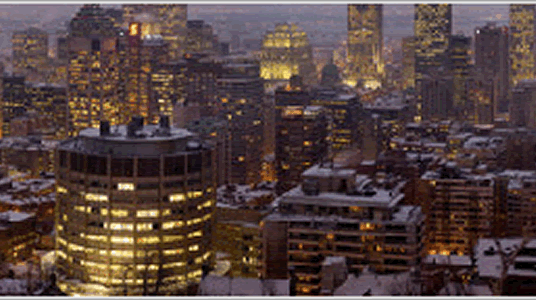 Montreal, North America's Francophone metropolis
Montreal, North America's Francophone metropolis
For those considering immigrating to Quebec, it is important to note that its culture and arts are more representative of European sensibility. More than any other province in Canada, Quebec has a greater affinity to European culture, in part, due to the significant ties to France and its French speaking culture.
Quebec is affectionately known as la belle province ("the beautiful province"), Quebec is bordered to the west by the province of Ontario, James Bay and Hudson Bay. To the north are the Hudson Strait and Ungava Bay, to the east the Gulf of Saint Lawrence, the provinces of New Brunswick and Newfoundland and Labrador, and to the south the States. Quebec is Canada's largest province by area and its second-largest administrative division; only the territory of Nunavut is larger.
Quebec boasts a vibrant Immigration community and in recent years has seen a significant increase in Immigration, especially to the more urban centres. It is the second most populated province, and most of its inhabitants live along or close to the banks of the Saint Lawrence River. The central and north portion of the province is sparsely populated and inhabited by the aboriginal peoples of Canada. The official language of Quebec is French; it is the sole Canadian province whose population is mainly French Canadian, and where English is not an official language at the provincial level.
While the province's substantial natural resources have long been the mainstay of its economy, Quebec has renewed itself to function effectively in the knowledge economy: information and communication technologies, aerospace, biotechnology, and health industries and has sough to strengthen its skilled workforce through Immigration to Canada.
Geography
As a result of the boundary expansions, the province currently occupies a vast territory (nearly three times the size of France), most of which is very sparsely populated. More than 90 percent of Quebec's area lies within the Canadian Shield and includes the greater part of the Labrador Peninsula. The most populated region is the St. Lawrence River valley in the south, where the capital, Quebec City, and the largest city, Montreal, are situated. North of Montreal are the Laurentians, a mountain range, and to the east are the Appalachian Mountains which extend into the Eastern Townships and Gaspésie regions. Quebec's highest mountain is Mont D'Iberville, which is located on the border with Newfoundland and Labrador in the northeastern part of the province. The Gaspé Peninsula juts into the Gulf of St. Lawrence to the east.
The northern region a major hydro-electric project is found on the La Grande and Eastmain rivers in the James Bay region (the La Grande Complex) and on the Manicouagan River, north of the Gulf of St. Lawrence.
Climate
Quebec has three main climate regions. Southern and western Quebec, including most of the major population centres, have a humid continental climate (Koppen climate classification Dfb) with warm, humid summers and cooler winters and the climate will be familiar to those immigrants considering Immigration from Europe to Canada. The main climatic influences are from western and northern Canada which move eastward and from the southern and central United States that move northward. Due to the influence of both storm systems from the core of North America and the Atlantic Ocean, precipitation is abundant throughout the year, with most areas receiving more than 1,000 mm (40 inches) of precipitation, including over 300 cm (120 inches) of snow in many areas. Severe summer weather (such as tornadoes and severe thunderstorms) are far less common than in southern Ontario, although they occasionally occur.
Most of central Quebec Winters are longer while summers are warm but very short due to the higher latitude and the greater influence of Arctic air masses. Precipitation is also somewhat less than farther south, except at some of the higher elevations.
The far northern regions of Quebec have an arctic climate (Koppen ET), with very cold winters and short, much cooler summers. The primary influences here are the Arctic Ocean currents (such as the Labrador Current) and continental air masses from the High Arctic.
| Ethnic groups | ||
|---|---|---|
| Ethnic origin | Population | Percent |
| Canadian | 4,474,115 | 60.1% |
| French | 2,151,655 | 28.8% |
| Irish | 406,085 | 5.5% |
| Italian | 299,655 | 4.0% |
| English | 245,155 | 3.3% |
| Scottish | 202,515 | 2.79% |
| Quebecer | 140,075 | 1.9% |
| German | 131,795 | 1.8% |
| Chinese | 91,900 | 1.24% |
Immigration Profile
Canada and Quebec have had Immigration agreements since 1971, Quebec played a major role with regard to independent immigrants, that is, those selected on the basis of economic and social factors intended to assess their ability to adapt and to contribute to the province. For this purpose, Quebec enacted its own point system, which, while it has many of the same features as the federal system, nevertheless differs in some significant respects.
The Canada 2011 Census enumerated a total of 974,895 foreign-born residents in Quebec, an increase from 851,600 foreign-born individuals in 2006. Quebec was the province with the second-highest share, of new Canadian immigrants who had arrived in Canada, the first being Ontario. Of the estimated 6,775,765 immigrants, 12.6% lived in Quebec.
Government
The head of government is the Premier (called premier ministre in French) who leads the largest party in the unicameral National Assembly or Assemblée Nationale, from which the Council of Ministers is appointed. The current Premier of Quebec is Phillippe Couillard.
Until 1968, the Quebec legislature was bicameral, consisting of the Legislative Council and the Legislative Assembly. In that year the Legislative Council was abolished, and the Legislative Assembly was renamed the National Assembly. Quebec was the last province to abolish its legislative council.
The government of Quebec awards an order of merit called the National Order of Quebec. It is inspired in part by the French Legion of Honour. It is conferred upon men and women born or living in Quebec (but non-Quebecers can be inducted as well) for outstanding achievements.
Population Centres
| Census metropolitan areas by population | ||||
|---|---|---|---|---|
| Census metropolitan area | 2011 pop. | 2006 pop. | Region² | Image |
| Montreal | 33,824,221 | 3,635,571 | Montreal | 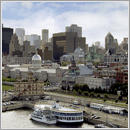 |
| Quebec City (provincial capital) |
765,706 | 719,153 | Capitale-Nationale | 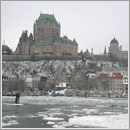 |
| Sherbrooke | 201,890 | 191,410 | Estrie | 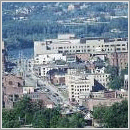 |
| Saguenay | 157,790 | 156,305 | Saguenay-Lac-Saint-Jean | 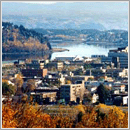 |
| Trois-Rivières | 151,773 | 144,713 | Mauricie | 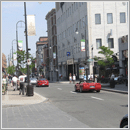 |
Economy & Immigration
The St. Lawrence River Valley is a fertile agricultural region, producing dairy products, fruit, vegetables, foie gras, maple syrup (Quebec is the world's largest producer), and livestock. Immigrants from Europe will be familiar with the mix of rural agriculture and manufacturing that are primary drivers of the economy.
North of the St. Lawrence River Valley, the territory of Quebec is extremely rich in resources in its coniferous forests, lakes, and rivers-pulp and paper, lumber, and hydroelectricity are still some of the province's most important industries.
High-tech industries are very important around Montreal and, as such, require a skilled workforce that is often supplemented by its influx skilled, newly immigrated workforce. It includes the aerospace companies like aircraft manufacturer Bombardier, the jet engine company Pratt & Whitney, the flight simulator builder CAE and defence contractor Lockheed Martin, Canada. Those companies and other major subcontractors make Quebec the fourth biggest player worldwide in the aviation industry.
Culture
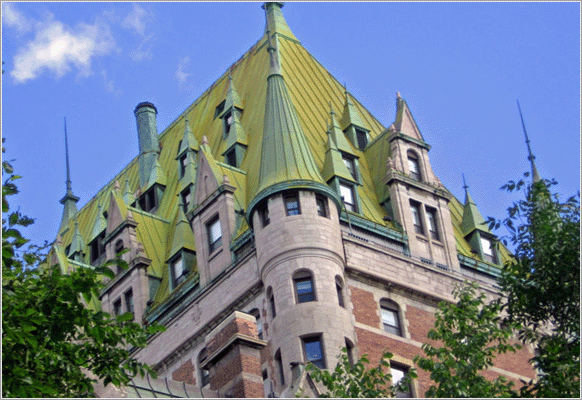 Château Frontenac, the world's most photographed hotel, is iconic to the province of Quebec.
Château Frontenac, the world's most photographed hotel, is iconic to the province of Quebec.
Quebecers comprise the largest French-speaking society in the Americas. Most French Canadians live in Quebec, though there are other concentrations of French-speakers throughout Canada with varying degrees of ties to Quebec. Montreal is the cosmopolitan cultural heart of Quebec.
Language
Quebec is the only Canadian province where French is the only official language. In the 2011 Census, Quebecers listed their mother tongue languages as follows:
- French speakers: 78%
- English speakers: 7.7%
- Others: 14.3% (Italian 1.6%, Spanish 1.8%, Arabic 2%, and others)